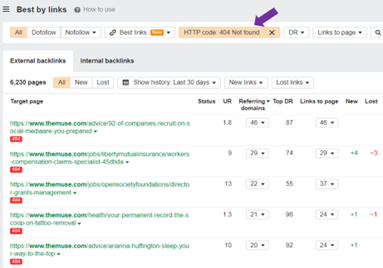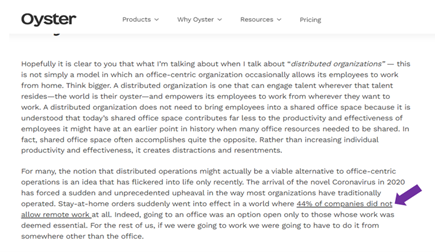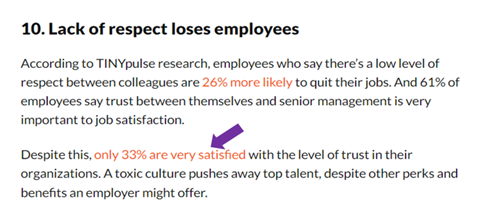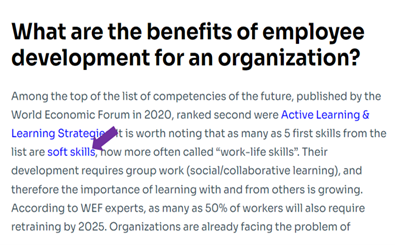MARKETING
The Beginner’s Guide to the Competitive Matrix [Template]
![The Beginner's Guide to the Competitive Matrix [Template] The Beginner's Guide to the Competitive Matrix [Template]](https://articles.entireweb.com/wp-content/uploads/2022/07/The-Beginners-Guide-to-the-Competitive-Matrix-Template.jpegkeepProtocol.jpeg)
Have you ever been playing a game and had to look around to check out the competition?
Whether you currently own or you’re looking to start your own business, you need to do the same thing. Luckily, there’s a methodical way to do that: by conducting a competitive analysis and creating a competitive matrix.
A competitive matrix will help you identify your competitors and lay out their products, sales, and marketing strategies in a visual format. By doing this, you’ll learn where you’re positioned in the market, how to differentiate yourself from your competition, and how to improve upon your processes so you can beat them in the marketplace.
Below, you’ll learn what a competitive matrix is and review some templates and examples.
What is a competitive matrix?
A competitive matrix is a way to visualize your competitor analysis. There are different kinds of competitive matrices you can use to compare yourself to your competitors. You can use a competitive matrix to identify strengths, weaknesses, opportunities, or threats to your company.
Competitor Matrix Types
Before you dive into the world of competitive matrices, it’s important to understand that there are different types you can use to compare your company to your competitors:
- SWOT analysis
- Competitive Advantage Matrix
- Competitive Profile Matrix
- Sales Matrix
- Product Feature and Benefit Matrix
- Price Matrix
SWOT Analysis
![The Beginner's Guide to the Competitive Matrix [Template] competitive matrix type: swot analysis](https://articles.entireweb.com/wp-content/uploads/2022/07/The-Beginners-Guide-to-the-Competitive-Matrix-Template.png)
A SWOT analysis is a technique used to assess how your business compares to its competitors. The acronym stands for strengths, weaknesses, opportunities, and threats. It analyzes internal and external factors that affect the current and future potential of your business. By identifying these elements, you create a space to capitalize on your strengths, improve your weaknesses, take advantage of opportunities, and eliminate threats.
If your company has an excellent profit record, this is a strength. If your company offers a small variety of products to its customers, this could be seen as a weakness. How do you determine what information goes into your SWOT analysis? Below are some questions you can use to guide you.
Strength Questions
The following questions should help you discover where your company excels. This information will help you attract and draw in new customers as well as maintain existing ones.
- What resources do you have?
- What makes you better than your competitors?
- What do your customers like about your product/services?
Weakness Questions
It’s difficult for your organization to improve if you have no system to determine your weaknesses. To remain competitive within your industry, you need to discover these faults to correct them.
- What do your customers dislike about your products/services?
- What areas do your competitors have an advantage in?
- Do you or your employees lack knowledge or skill?
- What resources do you lack?
Opportunity Questions
Keeping an eye on your competition is necessary; however, watching for available opportunities will give your business a competitive advantage. These opportunities can come from both monitoring your competitors as well as industry trends.
- What are the current trends?
- What is the market missing?
- Is there available talent that you could hire?
- Are your competitors failing to satisfy their customers?
- Is your target market changing in a way that could help you?
Threat Questions
Threats can come up within a business at any time. These can be internal or external factors that potentially harm your company and its operations. Identifying these threats will help your business run efficiently.
- Who are your competitors?
- Has there been an increase in your competition?
- What are the obstacles you are currently facing?
- Are your employees satisfied with their pay and benefits?
- Are government regulations going to affect you?
- Is there a product on the market that will make yours outdated?
As demonstrated by these questions, a SWOT analysis matrix can help your company identify elements that are often overlooked.
Competitive Advantage Matrix
![The Beginner's Guide to the Competitive Matrix [Template] competitive matrix type: competitive advantage matrix](https://articles.entireweb.com/wp-content/uploads/2022/07/1656713090_559_The-Beginners-Guide-to-the-Competitive-Matrix-Template.png)
A competitive advantage matrix analyzes your company’s competitive advantage by assessing volume production and differentiation. Its purpose is to determine how your company can grow.
This matrix has two axes — vertical and horizontal. The vertical axis evaluates the number of opportunities available for achieving a competitive advantage, while the horizontal axis measures the potential size of the competitive advantage. Using this information, the competitive advantage matrix is segmented into four boxes:
- Stalemate – Few advantages with small potential
- Volume – Few advantages with great potential
- Fragmented – Many advantages with small potential
- Specialized – Many advantages with great potential
Using this information gives you the tools to determine where your competitive advantage comes from.
Competitive Profile Matrix
![The Beginner's Guide to the Competitive Matrix [Template] competitive matrix type: competitive profile matrix](https://articles.entireweb.com/wp-content/uploads/2022/07/1656713091_698_The-Beginners-Guide-to-the-Competitive-Matrix-Template.png)
A competitive profile matrix is a tool your company can use to directly compare your strengths and weaknesses to industry competitors. For this matrix, you will use four elements: critical success factor, weight, rating, and score.
Critical success factors are areas that will determine your success. Examples are brand reputation, range of products, customer retention, and sales per employee. Once you have selected these factors, you will assign a weight. This is a measure of their importance, ranging from 0.0 (low importance) to 1.0 (high importance). Each factor should have its own weight, as each varies in importance. Avoid assigning a weight of 0.3 or more, as most industries are determined by many factors. This high value can decrease the number of factors you’re able to list in your matrix. When assigning weight, make sure the sum of all weights equals 1.0.
The third step is to rate your company and its competitors from 1 to 4 in each critical success factor. Rate:
1 – Major weakness
2 – Minor weakness
3 – Minor strength
4 – Major strength
The final step is to calculate the score. First, evaluate each critical success factor by multiplying the weight by the rating. Once this has been done for all, add each company’s score for the total score. This, when compared to your competitors, will show if you’re behind the curve, ahead of the curve, or on par with the industry.
Sales Matrix
A sales matrix is a tool used to help gauge the urgency and viability of sales opportunities. It evaluates potential customers’ interest in your business against their fit for your product or service.
Imagine focusing all your efforts on a potential customer. You send content and numerous promotions only to discover that they aren’t interested in your company and are a bad fit. It’s unlikely you’ll get that sale, and it feels like time wasted. Now, imagine giving all that energy to someone interested and a good fit. The sale becomes a lot more likely. A sales matrix uses interest and fits to help you decide how much attention to give your potential clients at any given time.
Product Feature and Benefit Matrix
The product feature and benefits matrix evaluates how your offer matches customer needs. It’s weighted by its importance versus its perceived distinction or advantage. When using this matrix, your features fall into the following categories:
- Irrelevant – Low importance and low distinction
- Overinvested – Low importance and high distinction
- Key liabilities – Low importance and high distinction
- Key differentiators – High importance and high distinction
This information tells you what features to keep, what features to get rid of, and where you might be able to save money. Consider an iPad. Say Apple spends a large portion of the manufacturing budget to produce a high-quality camera, only to find out that most users don’t even use it. The camera has a high perceived distinction, yet it’s of low importance to iPad users. This information would tell Apple that they overinvested in this feature and could potentially reduce it to save costs in the future.
Price Matrix
![The Beginner's Guide to the Competitive Matrix [Template] competitive matrix type: price matrix or page](https://articles.entireweb.com/wp-content/uploads/2022/07/The-Beginners-Guide-to-the-Competitive-Matrix-Template.jpeg) A price matrix is a tool used to define product costs, features, and tiers. It allows you to determine how much you will charge for specific levels of service. Unlike the other matrices on this list, a price matrix is a customer-facing competitive matrix type. You are creating it for your potential customer.
A price matrix is a tool used to define product costs, features, and tiers. It allows you to determine how much you will charge for specific levels of service. Unlike the other matrices on this list, a price matrix is a customer-facing competitive matrix type. You are creating it for your potential customer.
When building your price matrix, start with your tiers. It’s common to lay out two or three levels. Once you’ve named them, create a short description. Depending on the industry, you might find it easier to include a few features associated with the category. Once you do, list the prices. If not, create a call-to-action (CTA) for your potential customer to contact you for a quote.
Remember, as you build your tiers, the price will go up with each one. To stay on par with the perceived value, ensure you offer additional features or benefits to justify the cost.
The Benefits of Competitive Matrices
Essentially, you can use a competitive matrix to compare any characteristics of your company with a competitor.
Sometimes these matrices will be more visual in nature (a plotted graph), but sometimes it’s just an Excel document with the information listed in columns.
The goal of the competitive matrix is to see at a glance the competitive landscape and your position in the marketplace. This will help you see gaps in the marketplace and hone in on your unique value proposition.
Perhaps, after looking at a competitive matrix, you brainstorm new product ideas or new tools or features that you hadn’t considered before. Or maybe you come out of it with a ton of ideas on how to improve your content marketing strategy.
Regardless, you can use a competitive matrix for a lot of reasons. You can use it to develop new ideas, or you can use it to train sales staff on how to differentiate your company from the competition.
After figuring out what you’re going to do with the information, make sure you write down your ideas, develop KPIs, and regularly conduct this analysis to stay up to date with your strategy.
Now that you know what a competitive matrix is and how to use one, let’s review some templates you can use for your own strategy.
Competitive Matrix Templates
Competitive matrices are used to facilitate the process of comparing your business with other industry competitors. They help you take advantage of strengths and opportunities, while identifying weaknesses and threats before they become detrimental. Ultimately, a competitive matrix is an industry-analysis tool that makes your life easier. To make the process even easier, use the following competitive matrix templates.
1. Two-Feature Competitive Landscape Chart
One type of competitive matrix you can do is a simple comparison of features. You can use this information to plot where your company is compared to competitors.
The features could be something like price or customization potential. Then, you’d place the logos of each company (including yours) on the graph, depending on how well a company executes a certain feature. The point of this matrix is to visualize who does what better, so you can see what you have to work on and how to differentiate yourself against the competition.
2. Content Marketing Analysis Template
As a content marketer, this is my favorite template. With this, you can compare social media followers, blog strategy, email strategy, SEO, etc. This will help you decide where you need to focus your content strategy. Should you place emphasis on Twitter rather than Facebook? If you download this template, it also includes a graph and more strategies to analyze.
3. SWOT Analysis Template
A basic competitive matrix is the SWOT analysis. Conducting a SWOT analysis will help you identify areas where you could improve. You should conduct a SWOT analysis for yourself and your competition. Knowing what weaknesses your competition has will help your sales reps and help you make improvements in those areas.
4. Review Tracker
A review tracker matrix will help you see at a glance the types of reviews you get versus your competitors. It’s important not to forget about reviews because they can have a significant impact on a business. With this template, you can also use a scoring system to normalize the averages.
After reviewing those templates, it’s time to see what a competitive matrix looks like in action. Here are some examples below.
Competitive Matrix Examples
1. HubSpot
This is a public HubSpot competitive matrix comparing the overall pricing of our CRM versus Salesforce. It’s a standard matrix meant to help people see the difference between the CRMs at a glance.
![The Beginner's Guide to the Competitive Matrix [Template] HubSpot vs. Salesforce competitive matrix example.](https://articles.entireweb.com/wp-content/uploads/2022/07/1656713094_947_The-Beginners-Guide-to-the-Competitive-Matrix-Template.png)
2. SugarSync
This is a great example of what a feature matrix might look like. SugarSync compares its feature offerings against the competition in an easy-to-understand visualization.
![The Beginner's Guide to the Competitive Matrix [Template] SugarSync competitive matrix example.](https://articles.entireweb.com/wp-content/uploads/2022/07/1656713094_328_The-Beginners-Guide-to-the-Competitive-Matrix-Template.png)
3. 360iResearch
In this example, 360iResearch reports on survey management software. This is a competitor grid showing which companies have the best product satisfaction and business strategy.
![The Beginner's Guide to the Competitive Matrix [Template] 360iResearch competitive matrix example.](https://articles.entireweb.com/wp-content/uploads/2022/07/1656713095_893_The-Beginners-Guide-to-the-Competitive-Matrix-Template.png)
No competition, no progress.
Innately, competition feels unpleasant; however, that’s not all it has to be. It can lead to growth and make you look deeper into your business to find ways to improve. Competitive matrices are great tools to help you uncover how you’re different from your competitors. They show areas of improvement and where you excel. If you’re having trouble evaluating your company’s position in your industry, use this article and the above tools to help.
Editor’s note: This post was originally published in January 2021 and has been updated for comprehensiveness.
MARKETING
Tips and Tricks for Digital PR

In the bustling digital landscape of the 21st century, public relations (PR) stands as a beacon of brand visibility, trust-building, and reputation management. As businesses navigate the complexities of online competition, the synergy between search engine optimization (SEO) and PR has become increasingly evident. This article delves into digital PR, exploring how strategic integration with SEO practices can elevate brand visibility, drive organic traffic, and amplify PR success.
The SEO & Digital PR Power Couple
In today’s digital landscape, success hinges on a strong online presence. Two crucial aspects of achieving this are SEO and Digital PR. While they may have functioned as separate strategies in the past, they’re now recognized as a powerful team.
SEO focuses on optimizing your website and content to rank higher in search engine results, driving organic traffic. PR, on the other hand, builds brand awareness and cultivates positive press mentions.
However, creating compelling content that resonates with audiences and search engines can be challenging for many PR professionals. A recent Institute for Public Relations study found that nearly three-quarters (70%) of PR practitioners struggle with content creation. This is where the magic of SEO and digital PR working together comes in.
Combining these forces creates a synergy that delivers impressive results. Effective SEO techniques in PR campaigns can amplify brand messaging and ensure it reaches the right audience through search engines.
Conversely, strong PR efforts can generate backlinks to your website, a significant factor influencing SEO ranking. This teamwork propels brands to industry leadership by establishing online authority and positive brand sentiment.
Optimizing Your PR Efforts for SEO
PR and SEO go hand-in-hand in today’s digital marketing landscape. By aligning your PR activities with SEO best practices, you can significantly boost your online presence and reach a wider audience. Here’s how:
Keyword Research
Just like any successful marketing campaign, PR needs a strong foundation. Keyword research is crucial for understanding the language your target audience uses online. According to Google, more than half of consumers (53%) consult online resources before purchasing a product or service.
This includes potential students researching educational options. For instance, terms like “best online degrees for 2024” can be valuable keywords for online schools to target in their PR efforts to reach potential students actively searching for programs.
By identifying relevant keywords with high search volume, PR professionals can craft messaging that resonates with their audience and increases the discoverability of their content in search results.
Content is King (and Queen)
Compelling and newsworthy content is the cornerstone of any successful PR campaign. But for SEO, it’s not just about capturing attention.
High-quality content, such as press releases, blog posts, and infographics, should also be optimized for search engines. This includes using relevant keywords strategically throughout your content and adhering to on-page SEO best practices. By creating content that is both informative and search-engine friendly, you attract not only readers but also valuable backlinks and organic traffic.
Building Backlinks
Backlinks are links from other websites pointing back to yours. Search engines consider backlinks a sign of trustworthiness and authority.
Strategic PR campaigns can help you secure these valuable backlinks by pitching newsworthy content to relevant websites, building relationships with journalists and influencers, and leveraging social media to promote your content. However, focusing on earning backlinks from reputable sources is crucial, as spammy tactics can hurt your SEO efforts.
Optimizing Media Coverage
Every media placement you secure, whether an article, interview, or social media mention, presents an opportunity to enhance your SEO. Encourage journalists and influencers to include relevant keywords and links to your website in their coverage.
Promoting these media placements on your social media channels can amplify their reach and drive more organic traffic to your website.
Advanced SEO Techniques for PR Success
Today’s audiences crave engaging content; SEO is crucial to seeing your message. Incorporating advanced SEO tactics into your PR strategy can amplify your reach and achieve tremendous success.
Leveraging Multimedia
We’re living in the age of visual storytelling. Eye-catching images, infographics, and videos aren’t just trends; they’re powerful tools for grabbing attention and boosting SEO.
A Demand Metric report highlights the power of video marketing for conversions. 93% of marketers agree that video is just as practical, or even more effective, at driving conversions compared to other content formats.
These elements enhance user experience and provide opportunities for keyword optimization. Descriptive alt tags and strategic file names can help search engines understand your content and improve your ranking for relevant searches.
Data-Driven PR
Gone are the days of guesswork in PR. You can achieve laser focus and maximum impact by integrating SEO data with your PR strategy. Tools like keyword research can help you identify topics and language your target audience is actively searching for.
Analyzing website traffic and other SEO metrics allows you to tailor your content for optimal performance. This data-driven approach ensures you craft content that resonates with your audience and achieves your PR goals.
Collaboration is Key: Aligning SEO & PR Teams
Many companies have separate SEO and PR teams, but these teams should work together closely for maximum impact. By collaborating, SEO and PR can achieve more than they could. Here’s why:
- More robust results: When SEO and PR share information, like keyword research and content plans, they can create campaigns strategically placed in search engines and reach the right audience through media coverage.
- Unified Voice: Consistent team communication ensures a consistent message across all channels, from website content to press releases. This builds trust and credibility with your target audience.
- Measurable Success: Working together allows SEO and PR to track the combined impact of their efforts. This data can refine future campaigns and demonstrate the overall value they bring to the organization.
In short, by breaking down silos and working as one unit, SEO and PR can create a powerful force for achieving your company’s goals.
The Future of SEO & Digital PR
The digital world is constantly changing, and how we approach SEO and digital PR also needs to evolve. Here’s a look at some of the biggest trends we can expect to see:
AI-powered everything
Artificial intelligence (AI) is poised to become a game-changer in SEO and digital PR. AI can help create high-quality content tailored to specific audiences, analyze vast data to identify trends and opportunities and personalize outreach efforts for journalists and influencers.
Voice search is king
With the rise of voice assistants like Siri and Alexa, voice search optimization is becoming increasingly important. This means websites must be optimized for natural language queries and focus on long-tail keywords that people might use when speaking.
Focus on user experience
Search engines are becoming more competent at understanding what users are looking for and giving more weight to websites offering a positive UX. This means creating sites that are easy to navigate, load quickly, and provide valuable and relevant information.
Building trust and authority
Search engines also emphasize Expertise, Authoritativeness, and Trustworthiness (E-A-T) when ranking websites. This means businesses must establish themselves as thought leaders by creating high-quality content and building relationships with other reputable websites.
By staying ahead of these trends, businesses can ensure their websites are visible, and their brands are well-represented in the ever-changing digital landscape.
Beyond the Buzz: Building Lasting Success with SEO-Fueled PR
In the dynamic realm of digital PR, mastering the art of SEO integration is paramount for sustained success. By optimizing PR efforts through strategic keyword research, compelling content creation, and targeted link-building strategies, brands can amplify their visibility, drive organic traffic, and forge lasting connections with their audience.
As we march towards the future, the synergy between SEO and PR will continue to be a guiding light, illuminating the path towards digital supremacy.
MARKETING
3 Contextual Link-Building Strategies That Actually Work

Quality content can get your web pages ranking higher in Google search results. But contextual links can help, too.
Google says the inclusion of relevant, high-quality links signals the content that includes them may be quality content, too.
So, how can you earn contextual links to give your content an edge over the competition? Adopt one, two, or all three of the strategies detailed in this article.
But first, let’s understand what contextual links are.
What are contextual links?
A contextual link appears in the body of a web page’s content. A hyperlink is added to a relevant word or phrase. They:
- Link to other pages on the site.
- Cite the source of a claim or statistic.
- Indicate other relevant pages.
- Provide readers with more in-depth information on the topic.
- Guide readers to a product or service.
In this screenshot of an article with the header, Challenges of Productivity Tracking in Remote Workplaces, three phrases are hyperlinked — measure productivity, Microsoft, and research by Gartner.
Each contextual link serves a purpose:
- “Measure productivity” goes to a Slack article about how to measure employee productivity.
- “Microsoft” directs the reader to the original research for the cited statistic.
- “Research by Gartner” links to the native source for the research cited in that paragraph.
With a contextual link-building strategy, you not only boost your content in the eyes of Google but also encourage other sites to use your valuable content to provide their readers with additional information or context.
Now, let me show you three strategies to grow your contextual links and improve your content’s rankings.
1. Help sites fix their broken links
Broken link building involves contacting a website, pointing out a broken external link on a page, and suggesting your content as its replacement.
Broken links could result from a 404 error, a blank page, or a redirect to an irrelevant page — any alteration that ruins the original link’s purpose.
Since broken links negatively affect the visitor experience, removing them is in the site’s best interest. Your replacement offer gives them a quick solution to their problem. Plus, people are more willing to help you after you’ve helped them.
To find broken links, use a tool like Free Backlink Checker extension. I also like to inspect links manually since most tools only pick up 404 errors. Rely solely on them, and you will miss relevant broken-link opportunities.
Ahrefs also has tools for finding broken links. Its free broken link checker is helpful, but the paid version is more robust.
Paid subscribers can go to Site Explorer, go to the Outgoing Links report, and click on “Broken Links” from the dropdown menu.
The report identifies the total number of broken links (3,136 in the example below), the referring pages (the URL for the content including the broken link), the anchor (the words hyperlinked in the content), and the link (the URL that no longer directs to a viable page).

Ahrefs subscribers can also compile a Best by Links report under the Pages option in the Site Explorer tool.
In this example, the report lists pages with 404 page-not-found errors for TheMuse.com. It has 6,230 pages with broken external links. Each page URL listed is accompanied by the number of referring domains and a number of links to the page.

This research can identify the topics with the biggest potential to become the fixes for a broken link. You can create content to address them or identify content you already published. Just make sure the content closely matches the intent of the anchor text’s original link.
For example, the same research report, which is now a broken link, is cited in articles from Oyster and TINYpulse. On Oyster, the anchor text reads, “44% of companies did not allow remote work.” On TINYpulse, the anchor text says, “only 33% are very satisfied with the level of trust in their organization.”


For a single article link to replace the broken link on Oyster and TINYpulse, the content would need to cite both a statistic about remote work and another stat about trust in organizations.
2. Guest posting
Like the broken-link replacement strategy, guest posting benefits both your and the recipient’s sites. You reach out to sites and offer to write content about a topic relevant to their audience that relates to your content subjects and includes a link to your site. This technique works well because you typically control where and how to add your link to make it as relevant as possible.
You can take multiple approaches to win guest-posting opportunities. No matter which tactics you use, track the sites and verify the site’s quality using Ahrefs, another tool, or a direct visit to the site.
First, you can use Ahrefs (or a similar tool) to examine your competitors’ backlinks and identify any links that come from guest posts. The anchor or surrounding text might hint at its status with phrases such as “contributed by,” “guest post by,” or the name of the brand or author. You also can check links manually to see if they’re contributed content.
In this example from Collegiate Parent, the headline reads “EFC Too High? Tips for Successful Aid Appeals” and includes a byline for “Billie Jo Weis.” At this point, you don’t know if it is a contributed article.

But scroll down to the end, and you can see the author’s bio. It confirms the article is a guest post because her bio says she is a client services advisor for My College Planning Team, not the publisher (Collegiate Parent).

You can also use Google search operators to identify sites open to guest contributions. You’ll want to do several searches using variations of your target keywords and topic accompanied by phrases, such as “guest post,” “contributed by,” “guest post by,” and “guest posting guidelines.”
The example in the screenshot below works for a brand targeting college prep topics. The search is “’college prep’ ‘guest post by’ -site.pinterest.com.” The results reveal four articles from four sites that use the words “college prep” and “guest post by.” You can add those sites to your outreach tracker.

Finally, you can list sites relevant to your niche that didn’t appear in the earlier searches.
TIP: Not all sites that accept guest articles say so on their website.
3. Niche edits
A niche edit, sometimes referred to as a link insert, is a technique that adds a link to existing content. The key to success is finding relevant articles on high-quality sites and pitching your content as a valuable addition to those articles.
You can use a similar process to the Google guest post search. Input a broad keyword for your targeted keyword, then tell it you don’t want the targeted keyword in the title. If the entire article is about your targeted keyword, your chances of getting the publisher to include a link to a similar article are low.
Here’s an example from one of our client’s that sought to make niche edits for the keyword “soft skills.”
The Google search included these phrases:
- “Organizational development” soft skills -intitle:”soft skills”
- “Organizational development” soft skills employee training -intitle:”soft skills”
- Soft skills employee training -intitle:”soft skills” organizations
It led to an added link for “soft skills” in this article — “Employee Development,” which includes the header, “What are the benefits of employee development for an organization?”

You can do several searches, modifying your search operators each time to see what sites and content appears. Think of multiple angles to broaden the potential sites that publish content with your targeted or a related keyword.
After you’ve crafted a list of high-quality prospects, it’s time for outreach.
Niche edits might be the hardest of the three strategies to achieve because they’re not as clear of a win-win situation as the other two (repairing broken links and publishing new content).
Your email pitch can make or break your niche-edit campaign. It must convince the publisher that your content provides so much value that they will want to take an extra step with content they’ve already completed.
Here are some tips to craft a link-earning email pitch:
- Start by mentioning something about them. It could be something you like about their website or the article you’re targeting. You want them to know you’ve explored their site and read the article. But don’t overdo it. A simple compliment or sentence about how you found the article helpful should suffice.
- Introduce your content and mention how it can help their audience. Be concise and convincing, but don’t oversell it.
- Go one step further and point to a section or sentence where you think your content might be a good fit. This will help them see where your content can add value and link to it.
Get linking
Though contextual link building may seem challenging to execute, it can bring great rewards. Follow these tips and strategies, and your valuable content will get more attention from external sites and eventually Google rankings where it deserves to be.
All tools mentioned in this article are identified by the author. If you have a tool to suggest, please tag CMI on social.
HANDPICKED RELATED CONTENT:
Cover image by Joseph Kalinowski/Content Marketing Institute
MARKETING
Google’s Surgical Strike on Reputation Abuse

These aren’t easy questions. On the one hand, many of these sites do clearly fit Google’s warning and were using their authority and reputation to rank content that is low-relevance to the main site and its visitors. With any punitive action, though, the problem is that the sites ranking below the penalized sites may not be of any higher quality. Is USA Today’s coupon section less useful than the dedicated coupon sites that will take its place from the perspective of searchers? Probably not, especially since the data comes from similar sources.
There is a legitimate question of trust here — searchers are more likely to trust this content if it’s attached to a major brand. If a site is hosting third-party content, such as a coupon marketplace, then they’re essentially lending their brand and credibility to content that they haven’t vetted. This could be seen as an abuse of trust.
In Google’s eyes, I suspect the problem is that this tactic has just spread too far, and they couldn’t continue to ignore it. Unfortunately for the sites that were hit, the penalties were severe and wiped out impacted content. Regardless of how we feel about the outcome, this was not an empty threat, and SEOs need to take Google’s new guidelines seriously.
-

 MARKETING3 days ago
MARKETING3 days ago18 Events and Conferences for Black Entrepreneurs in 2024
-

 MARKETING5 days ago
MARKETING5 days agoAdvertising on Hulu: Ad Formats, Examples & Tips
-

 WORDPRESS6 days ago
WORDPRESS6 days agoBest WordPress Plugins of All Time: Updated List for 2024
-

 MARKETING6 days ago
MARKETING6 days agoUpdates to data build service for better developer experiences
-

 WORDPRESS6 days ago
WORDPRESS6 days agoShopify Could Be Undervalued Based On A Long-Term Horizon
-

 PPC6 days ago
PPC6 days agoLow Risk, High Reward YouTube Ads alexking
-

 WORDPRESS4 days ago
WORDPRESS4 days ago5 Must See Telegram Plugins for WooCommerce
-

 MARKETING4 days ago
MARKETING4 days agoIAB Podcast Upfront highlights rebounding audiences and increased innovation


![The Beginner's Guide to the Competitive Matrix [Template] competitive matrix type: sales matrix](https://articles.entireweb.com/wp-content/uploads/2022/07/The-Beginners-Guide-to-the-Competitive-Matrix-Template.jpg)
![The Beginner's Guide to the Competitive Matrix [Template] competitive matrix template for two features](https://articles.entireweb.com/wp-content/uploads/2022/07/1656713092_302_The-Beginners-Guide-to-the-Competitive-Matrix-Template.png)
![The Beginner's Guide to the Competitive Matrix [Template] competitive matrix template for a content marketing competitive analysis.](https://articles.entireweb.com/wp-content/uploads/2022/07/1656713092_518_The-Beginners-Guide-to-the-Competitive-Matrix-Template.png)
![The Beginner's Guide to the Competitive Matrix [Template] competitive matrix template for a SWOT analysis.](https://articles.entireweb.com/wp-content/uploads/2022/07/1656713093_626_The-Beginners-Guide-to-the-Competitive-Matrix-Template.png)
![The Beginner's Guide to the Competitive Matrix [Template] competitive matrix template for a review tracker analysis.](https://articles.entireweb.com/wp-content/uploads/2022/07/1656713093_356_The-Beginners-Guide-to-the-Competitive-Matrix-Template.png)
![The Beginner's Guide to the Competitive Matrix [Template] New Call-to-action](https://articles.entireweb.com/wp-content/uploads/2022/01/1642686850_890_3-Types-of-Competitors-to-Watch-How-to-Find.png)














You must be logged in to post a comment Login